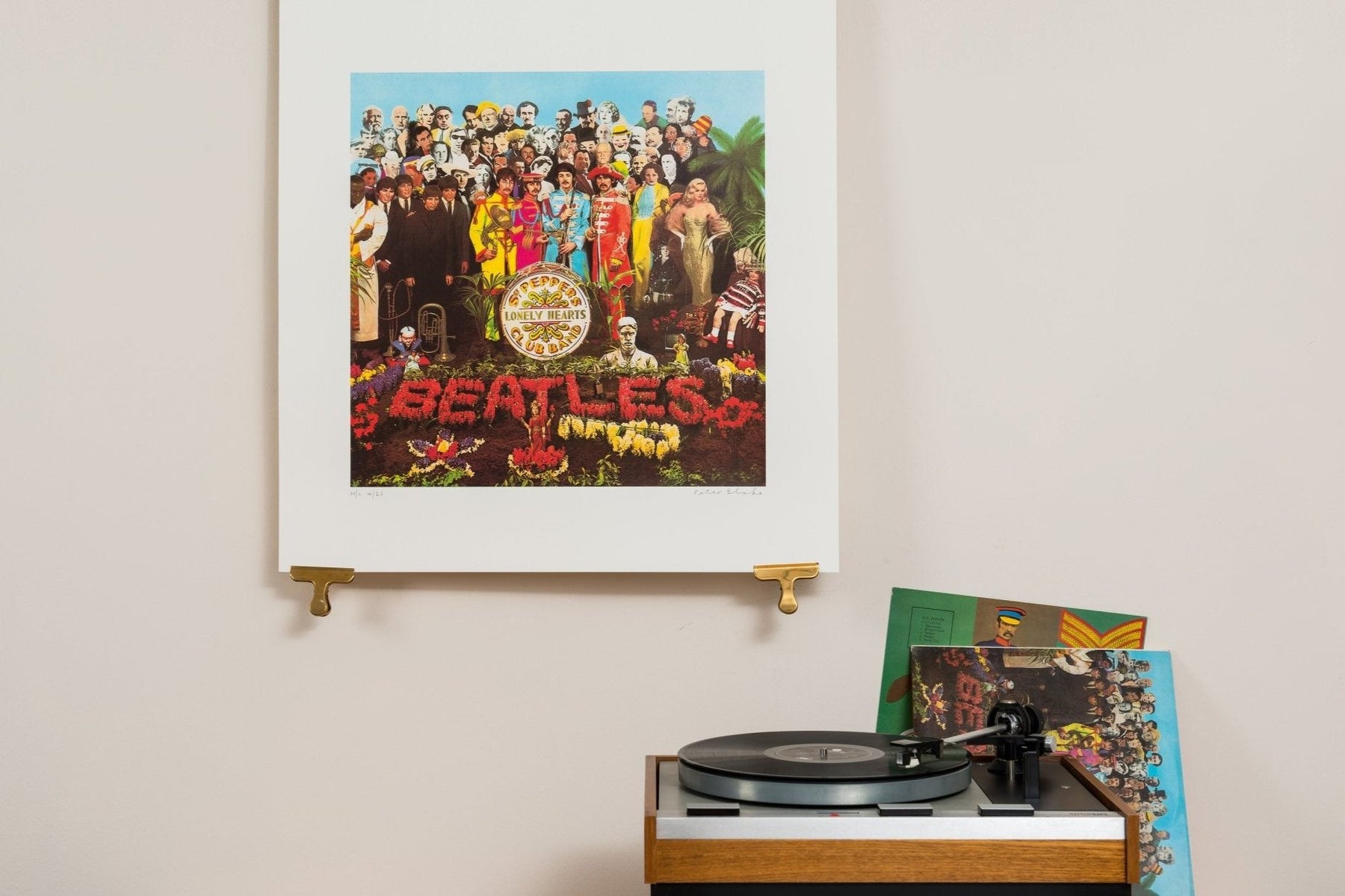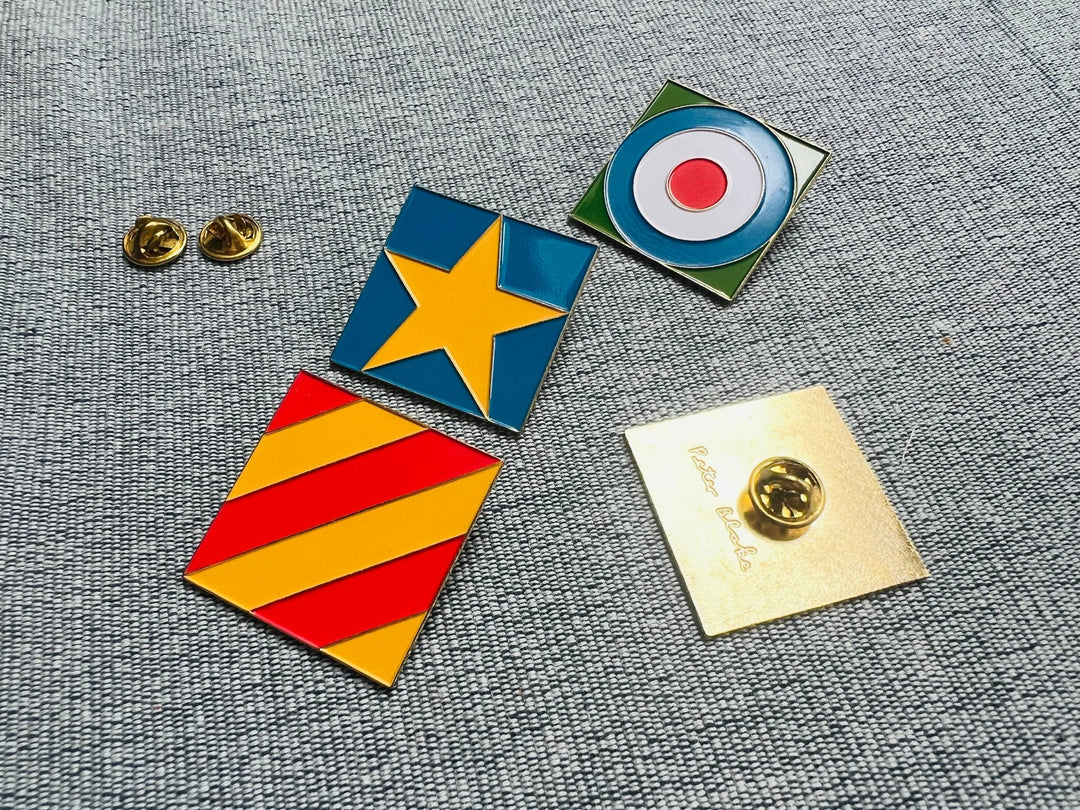Born in Dartford, London in 1932, Peter Blake attended Gravesend School of Art, and graduated in 1956 from the Royal College of Art, moving straight into a successful practice.
His most celebrated painting of this period, On The Balcony, exemplified techniques and interests that we see him exploring throughout his career. It also pointed the way for a new genre, with a British twist: Pop Art. Blake is often referred to as the 'Godfather of British Pop Art'.
“If, for me, The Beatles and The Who and The Kinks and the Stones were the sound of the 1960s, then Sir Peter’s work is the visual representation of that… He’s as important as the music”
Noel Gallagher
In 1962 the inaugural edition of the first Sunday colour supplement – The Sunday Times Colour Magazine – included a feature on Peter Blake, ‘Pioneer Of Pop Art’. In the sixties, Ken Russell’s Pop Goes the Easel, Lawrence Alloway’s British Art Today, Lord Snowdon’s Private View, the Tate’s Painting & Sculpture of a Decade, and The British Council’s London, The New Scene, all confirmed that Britain was the international art centre to watch.
Blake’s paintings often feature pictures within pictures, painted uniformly on a single plane. These images are pinned to clothing, framed on walls in imaginary settings, or held up by characters within the painting. Highlighting our tendency to collect objects and assimilate them into our own individual identities, Blake questions the line between looking and adopting.
Working in the creative hot spot of ‘Swinging London’ brought him in contact with leading figures of popular culture, including The Beatles. The definition of self through the identity of one’s heroes was an expression of sixties culture that reached a climax in his co-creation of the sleeve design for the Beatles' 1967 album Sgt. Pepper's Lonely Hearts Club Band.
View the limited edition print of that image here at Hypergallery

Blake is an artist, a collagist and a collector. Collecting, like collage, demands the bringing together of disparate objects. He regards his own studio as “essentially a big collage”, an ever-changing environment in which new configurations of objects can be discovered around every corner. This even developed into a collaboration with The Museum Of Everything in 2010, when a curated version of his studio collections was made open to the public.
His seminal art for Sgt. Pepper’s Lonely Hearts Club Band is probably the world’s best known album cover, but Peter’s connections with pop music led to many other ventures in album packaging, including designs for The Who, Eric Clapton, Pentangle, Ian Dury and the Band Aid and Live Aid projects.
"Album covers are like any other vehicle, the are a means of illustrating a story."
Sir Peter Blake
Later came work for Brian Wilson, Paul Weller’s Stanley Road and Oasis’ Stop the Clocks. Having formed a friendship with Ian Dury while teaching at the RCA, it was Blake who was asked to design the cover for the tribute album Brand New Boots and Panties following his friend's death in 2000. The album was released with his beautiful painted portrait of Dury on the sleeve.
Blake became a Royal Academician in 1981. He was appointed Commander of the Order of the British Empire in the 1983 Birthday Honours and Knight Bachelor in the 2002 Birthday Honours for his services to art. Retrospectives of his work were held at the Tate in 1983 and Tate Liverpool in 2008.
In 2005, the Sir Peter Blake Music Art Gallery, located in the School of Music, University of Leeds, was opened by the artist. The permanent exhibition features 20 examples of his album sleeve art, including the only public showing of the signed print of his Sgt. Pepper' artwork.
Throughout his career Blake has created artworks based on intentionally popular themes, through to designs for record and book covers each aimed at a mass audience. His interest in popular culture has informed his making and allowed him to operate without the constraints of a ‘fine art’ rule book, joyfully and prolifically. He has said that he feels that he gave up his right to be taken as a serious artist because of the diversity of his work. That he feels this in spite of his establishment credentials says a lot about the humility of this great man.






